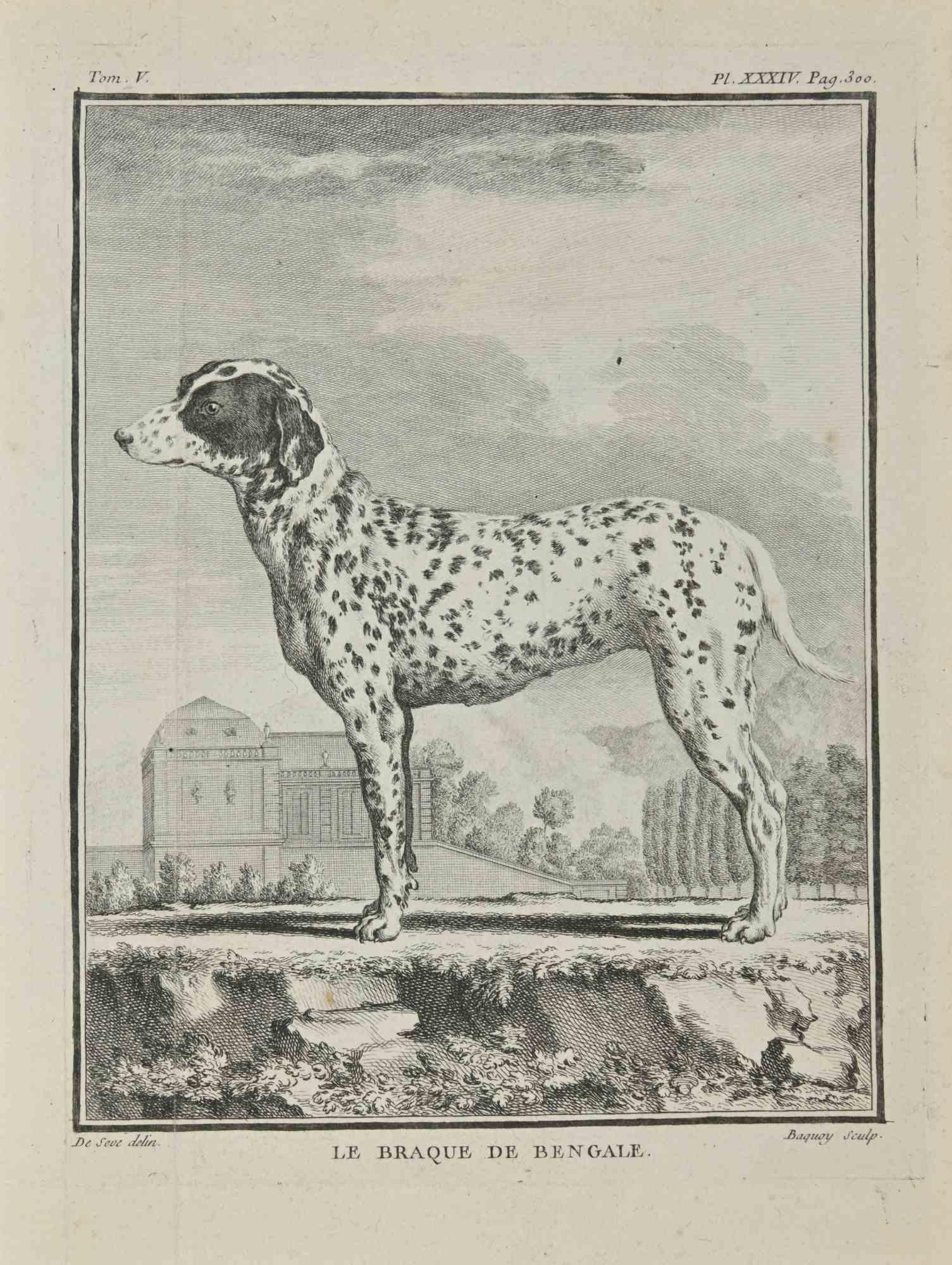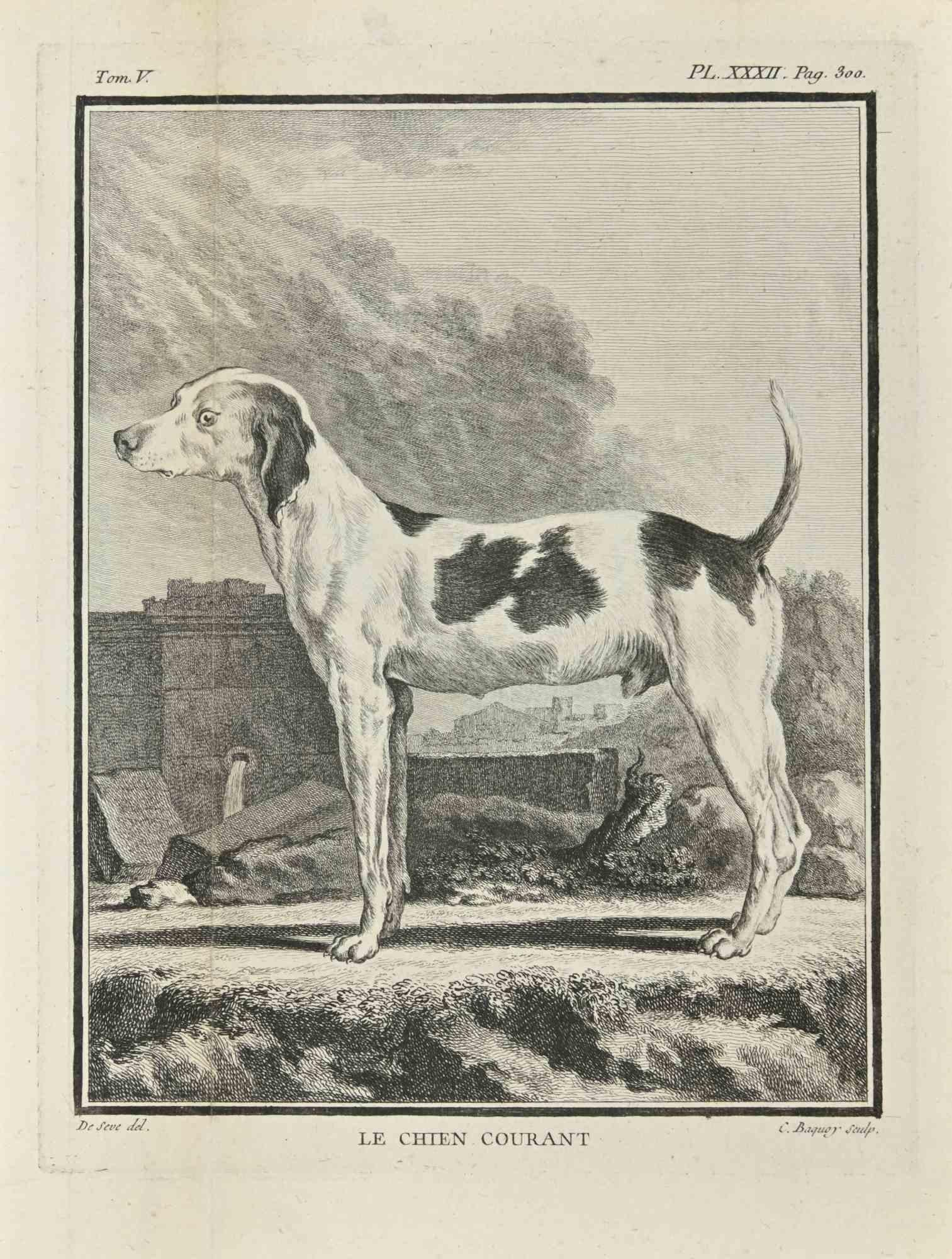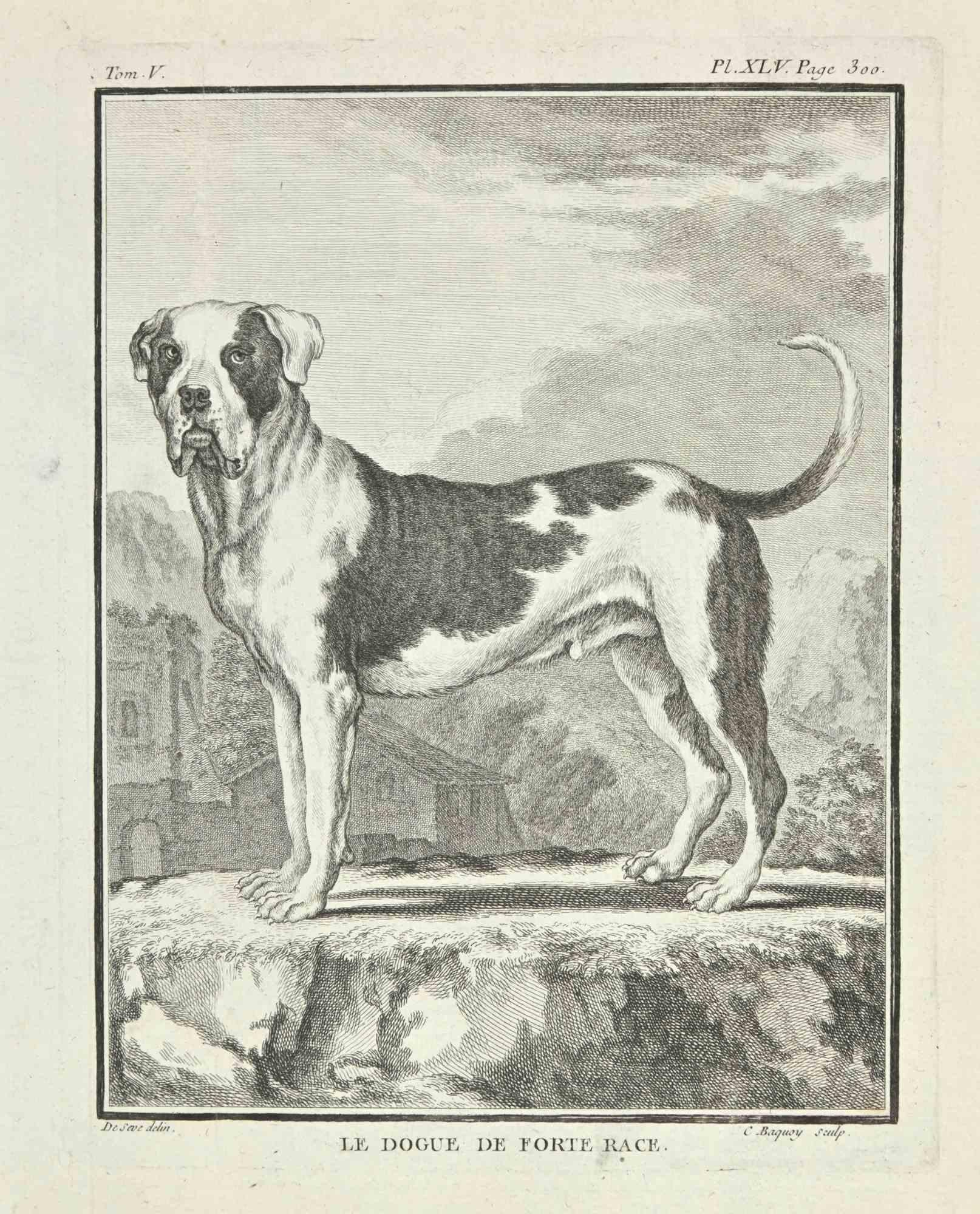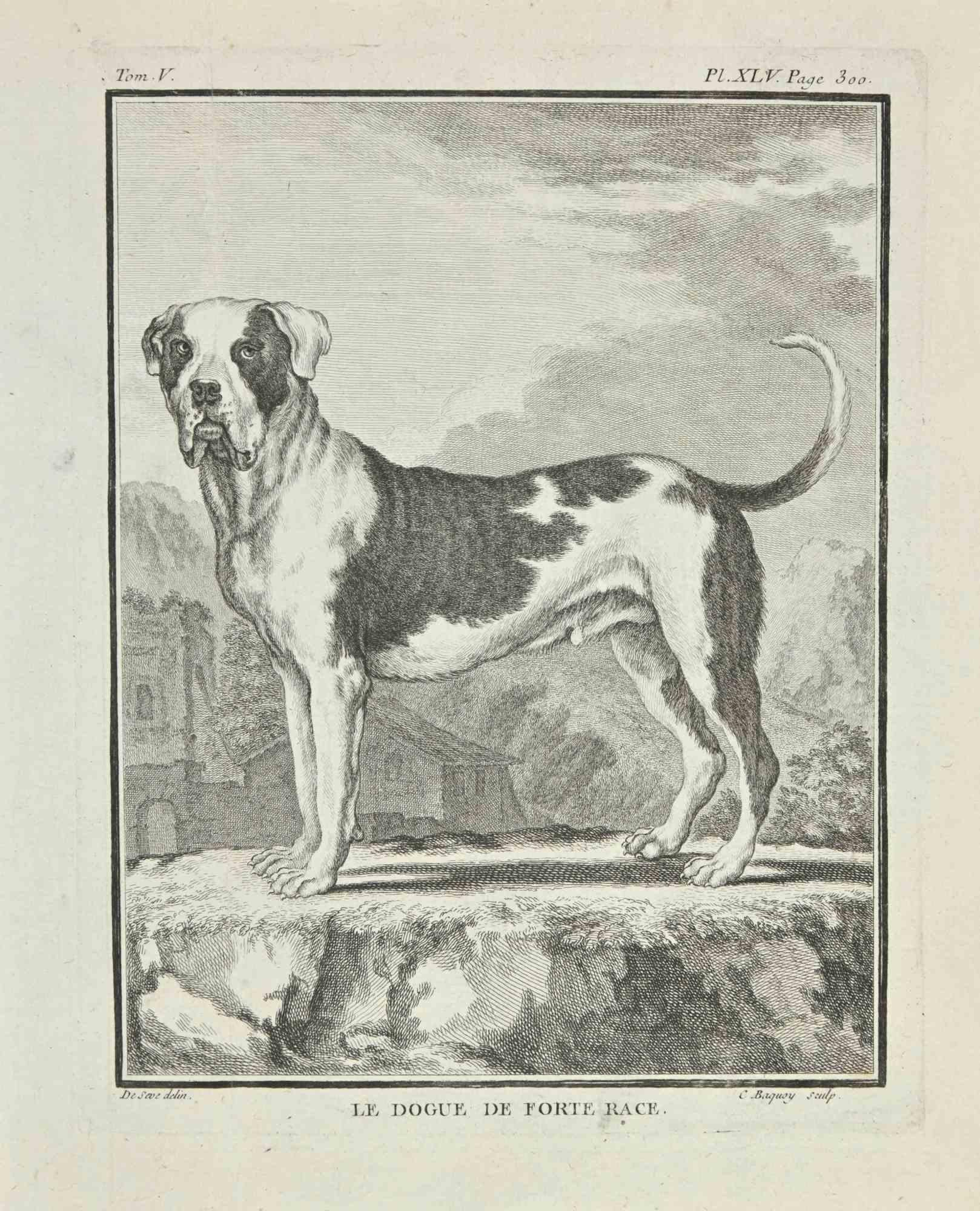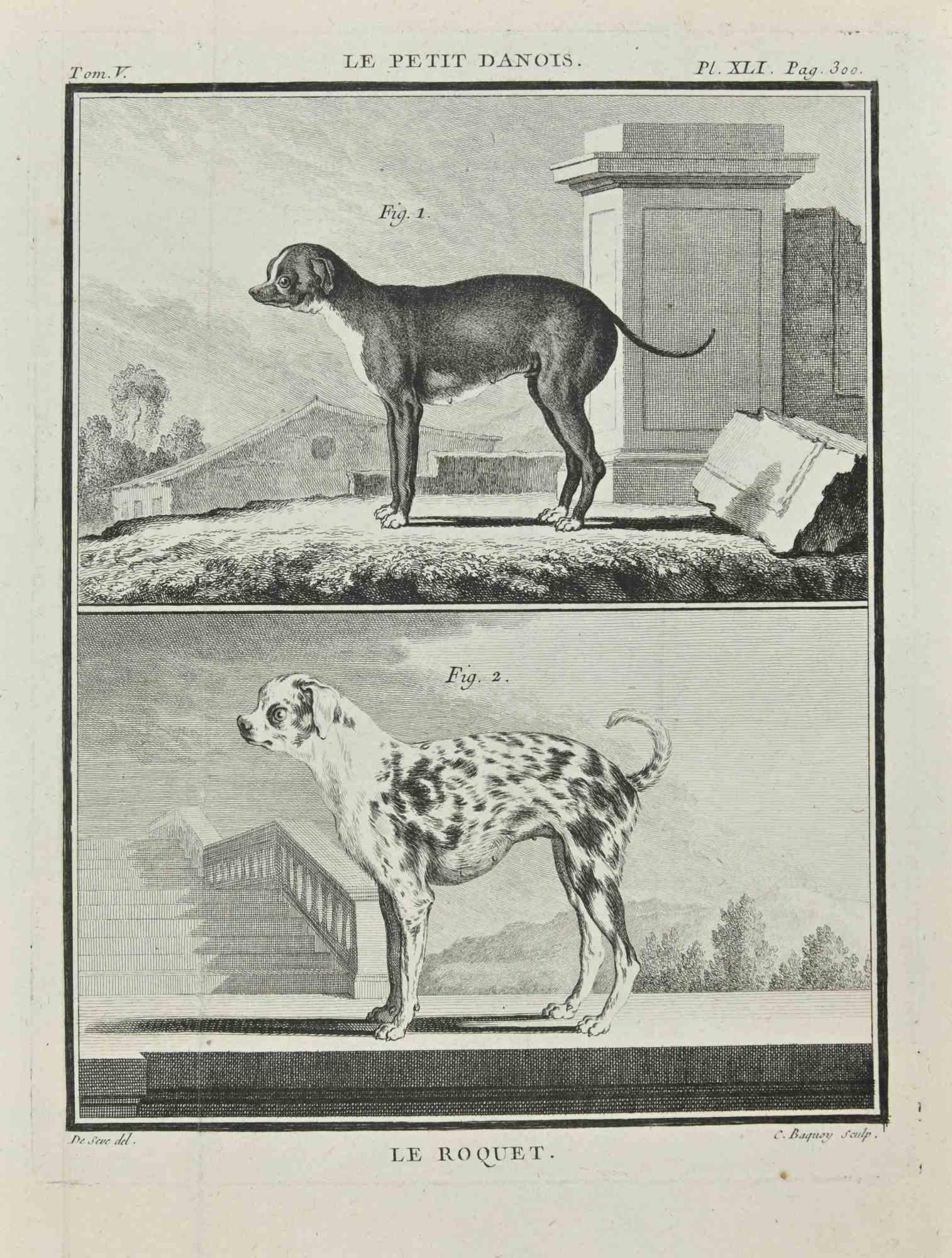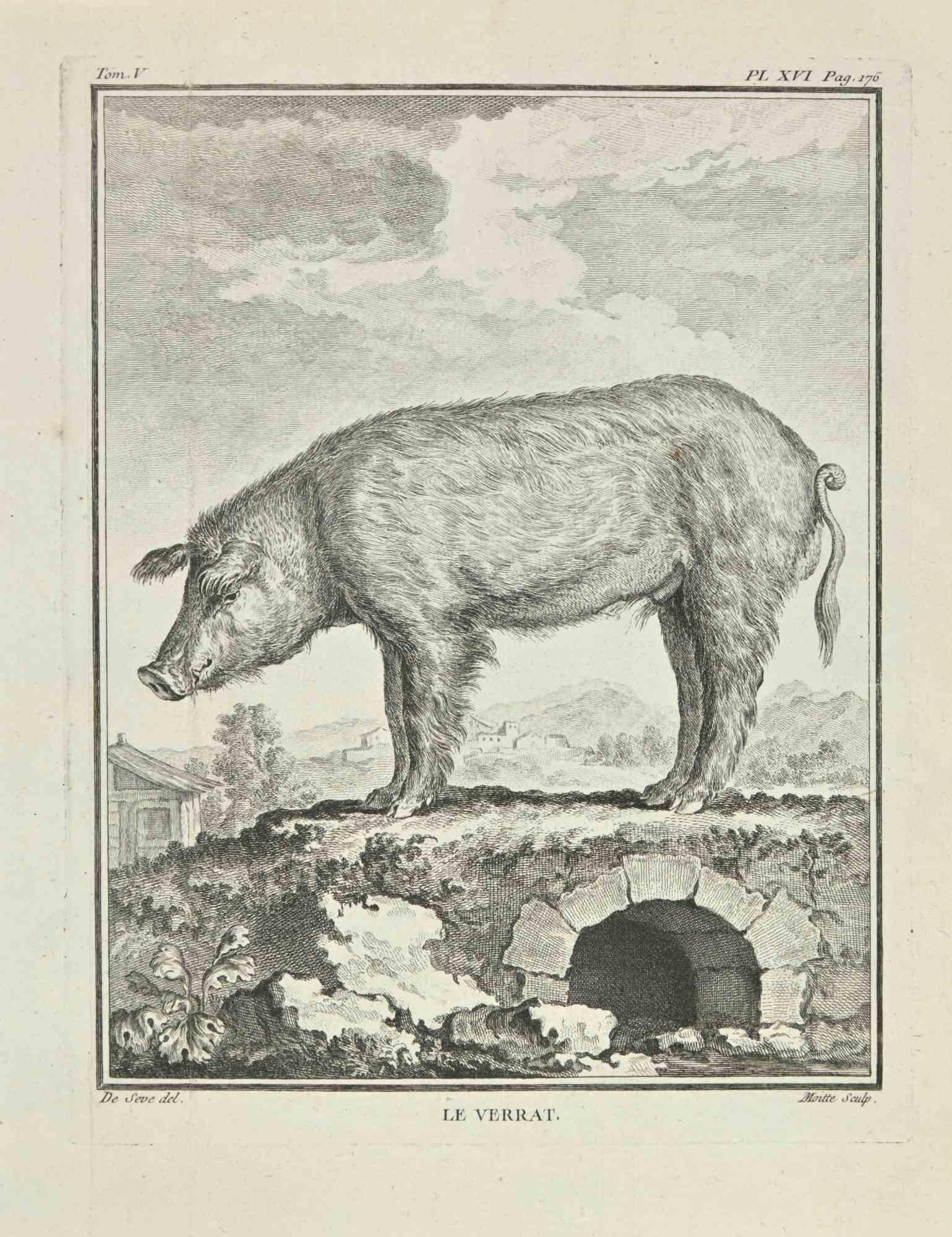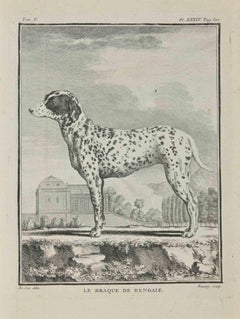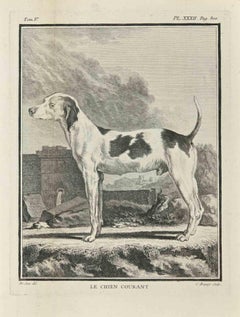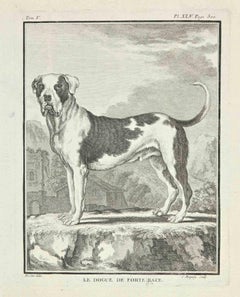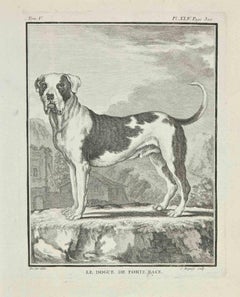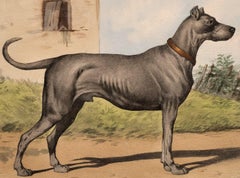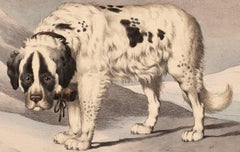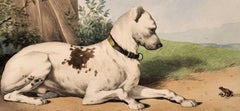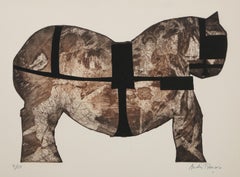Items Similar to Le Braque - Etching by Jean Moitte - 1771
Want more images or videos?
Request additional images or videos from the seller
1 of 2
Jean MoitteLe Braque - Etching by Jean Moitte - 17711771
1771
$141
$23540% Off
£107.97
£179.9540% Off
€120
€20040% Off
CA$198.18
CA$330.2940% Off
A$217.39
A$362.3140% Off
CHF 113.74
CHF 189.5740% Off
MX$2,587.35
MX$4,312.2540% Off
NOK 1,436.62
NOK 2,394.3640% Off
SEK 1,347.57
SEK 2,245.9540% Off
DKK 914.15
DKK 1,523.5940% Off
About the Item
Le Braque is an etching realized by Jean Moitte in 1771.
It belongs to the suite "Histoire naturelle, générale et particulière avec la description du Cabinet du Roi".
Artist's signature engraved lower right.
Good conditions
- Creator:Jean Moitte
- Creation Year:1771
- Dimensions:Height: 9.85 in (25 cm)Width: 7.49 in (19 cm)Depth: 0.04 in (1 mm)
- Medium:
- Movement & Style:
- Period:1770-1779
- Framing:Framing Options Available
- Condition:Insurance may be requested by customers as additional service, contact us for more information.a.
- Gallery Location:Roma, IT
- Reference Number:Seller: T-1416341stDibs: LU650312875282
About the Seller
4.9
Platinum Seller
Premium sellers with a 4.7+ rating and 24-hour response times
1stDibs seller since 2017
7,815 sales on 1stDibs
Typical response time: 1 hour
- ShippingRetrieving quote...Shipping from: Grasse, France
- Return Policy
More From This Seller
View AllLe Braque De Bengale - Etching by Jean Charles Baquoy - 1771
Located in Roma, IT
Le Braque De Bengale is an etching realized by Jean Charles Baquoy in 1771.
The artwork Belongs to the suite "Histoire naturelle, générale et particulière avec la description du Cab...
Category
1770s Modern Figurative Prints
Materials
Etching
$141 Sale Price
40% Off
Le Chien Courant - Etching by Jean Charles Baquoy - 1771
Located in Roma, IT
Le Chien Courant is an etching realized by Jean Charles Baquoy in 1771.
The artwork Belongs to the suite "Histoire naturelle, générale et particulière avec la description du Cabinet...
Category
1770s Modern Figurative Prints
Materials
Etching
$141 Sale Price
40% Off
Le de Forte Race - Etching by Jean Charles Baquoy - 1771
Located in Roma, IT
Interior of an Animal is an etching realized in 1771.
The artwork Belongs to the suite "Histoire naturelle, générale et particulière avec la description du Cabinet du Roi". Paris: I...
Category
1770s Modern Figurative Prints
Materials
Etching
$141 Sale Price
40% Off
Le Dogue de Forte Race - Etching by Jean Charles Baquoy - 1771
Located in Roma, IT
Le Dogue de Forte Race is an etching realized by Jean Charles Baquoy in 1771.
The artwork Belongs to the suite "Histoire naturelle, générale et particulière avec la description du C...
Category
1770s Modern Figurative Prints
Materials
Etching
$141 Sale Price
40% Off
Le Roquet - Etching by Jean Charles Baquoy - 1771
Located in Roma, IT
Le Roquet is an etching realized by Jean Charles Baquoy in 1771.
The artwork Belongs to the suite "Histoire naturelle, générale et particulière avec la description du Cabinet du Roi...
Category
1770s Modern Figurative Prints
Materials
Etching
$141 Sale Price
40% Off
Le Verrat - Etching by Jean Moitte - 1771
Located in Roma, IT
Le Verrat is an etching realized by Jean Gullaume Moitte in 1771.
The artwork Belongs to the suite "Histoire naturelle, générale et particulière avec la description du Cabinet du Ro...
Category
1770s Modern Figurative Prints
Materials
Etching
$141 Sale Price
40% Off
You May Also Like
Antique Dog Lithograph, Taste of Alfred De Dreux, France ca. 1870 Mastiff C
By Alfred de Dreux
Located in SANTA FE, NM
Antique Dog Portrait
Lithograph in the Taste of Alfred De Dreux
Mastiff C
France, circa 1870
Lithography
25 5/8 x 19 5/8 (28 x 20 frame) inches
Six lithographs of dog portraits.
...
Category
1870s Romantic Animal Prints
Materials
Lithograph
Antique Dog Lithograph Taste of Alfred De Dreux, France ca. 1870 Saint Bernard A
By Alfred de Dreux
Located in SANTA FE, NM
Antique Dog Portrait
Lithograph in the Taste of Alfred De Dreux
Saint Bernard
France, circa 1870
Lithography
25 5/8 x 19 5/8 (28 x 20 frame) inches
Six lithographs of dog portrait...
Category
1870s Romantic Animal Prints
Materials
Lithograph
$1,920 Sale Price
20% Off
Antique Dog Lithograph Taste of Alfred De Dreux, France ca. 1870 Bulldog & Frog
By Alfred de Dreux
Located in SANTA FE, NM
Antique Dog Portrait
Lithograph in the Taste of Alfred De Dreux
Bulldog and Frog
France, circa 1870
Lithography
25 5/8 x 19 5/8 (28 x 20 frame) inches
Six lithographs of dog portr...
Category
1870s Romantic Animal Prints
Materials
Lithograph
Cheval, Modern Etching and Aquatint by Andre Francois
By André François
Located in Long Island City, NY
Andre Francois, Hungarian (1915 - 2005) - Cheval, Year: circa 1960, Medium: Etching and Aquatint on Arches, signed and numbered in pencil, Edition: 7/50, Image Size: 15.5 x 22.5 ...
Category
1960s Modern Animal Prints
Materials
Aquatint, Etching
Swiss Hound Briquets – Antique Dog Print, circa 1880, French Publication
Located in Langweer, NL
Swiss Hound Briquets – Antique Dog Print, circa 1880, French Publication
This fine 19th-century print depicts two Swiss Hound Briquets, a medium-si...
Category
Antique Late 19th Century French Prints
Materials
Paper
After Georges Braque - Antiborée - Lithograph
Located in Collonge Bellerive, Geneve, CH
Lithograph after Georges Braque.
Signed in the plate
Edition of 150
Dimensions: 76 x 117 cm
Bibliography:
« Les Métamorphoses de Braque» of Heger de Loewenfeld and Raphaël de Cuttoli , Editions FAC, Paris, 1989.
In 1961 Georges Braque decided with his laidary friend Heger de Loewenfeld to pick up certain of his works to in order to create artworks, this beautiful litograph is one of them.
Héméra in the Mythology:
In Greek mythology Hemera was the personification of day and one of the Greek primordial deities. She is the goddess of the daytime and, according to Hesiod, the daughter of Erebus and Nyx (the goddess of night). Hemera is remarked upon in Cicero's De Natura Deorum, where it is logically determined that Dies (Hemera) must be a god, if Uranus is a god. The poet Bacchylides states that Nyx and Chronos are the parents, but Hyginus in his preface to the Fabulae mentions Chaos as the mother/father and Nyx as her sister.
She was the female counterpart of her brother and consort, Aether (Light), but neither of them figured actively in myth or cult. Hyginus lists their children as Uranus, Gaia, and Thalassa (the primordial sea goddess), while Hesiod only lists Thalassa as their child.
The father of Cubism
Three Cubist that distinguishes art historian periods were initiated and developed by Georges Braque: The Cubist Cézanne (1907-1909), Executive (1909-1912) and synthetic (1912-1922).
Post-Impressionist and fawn, Braque no longer adheres to the contingency of a decorative way or the other. Cézanne’s paintings exhibited at the Grand Palais during the retrospective of 1907 are a revelation: Cézanne sought and invented a pictorial language. In his footsteps, Braque went to the South with the reasons of the Master. He returned with Estaque landscapes and surprising Ciotat it keeps Cezanne geometric model and retains the “passages” continuity from one surface to another to create the sensation of “turning around” of the object represented. But he wants to go after the consequences of the vision of Cezanne. In his paintings Houses in L’Estaque (1908) it simplifies the volumes of houses, neglects detail by removing doors and windows: the plastic rhythm that builds the table. Large Nude , a masterpiece of the period, can be considered the first work of Cézanne cubism .
Systematizing and deepening Braque discoveries open the door analytical cubism. In 1909, his painting became more cerebral than sensual. The pattern is recreated in the two-dimensionality of the canvas, leaving aside any illusionistic perspective. In Still Life with Violin, objects are analyzed facets according to their characteristic elements, each facet referring to a particular view of the object. There are so many facets of points selected view: Table reflects the knowledge of the object and the ubiquity of the eye. Moreover, Braque is looking for the essence of the objects in the world rather than their contingency, which explains the absence of light source and use of muted colors (gray, ocher), contingent aspects of the object . But formal logic has stepped facets, erased any anecdote to the object and ultimately led to his painting a hermetic more marked on the edge of abstraction (see the series of Castle Roche-Guyon ).
Braque, anxious to keep the concrete and refusing at all costs that the logic of Cubism takes the paintings to abstract, reintroduced signs of reality in his paintings in 1912 marks the beginning of Synthetic Cubism. Historians speak of “signs of real” rather than reality because what interests Braque, this is not to put reality into a table, but to create a painting which, by its language, refers to the real. To do this, he invented two major techniques XX th century inclusions and contributions. The inclusions consist of painting objects that have no real depth, materials (wallpaper in Nature morte aux playing cards faux wood is a pictorial inclusion) or letters (calligraphic inclusion in Portuguese ), made first brush and a few months later stencil. Contributions are defined in contrast with the collage on canvas of foreign materials: glued or sand paper, sawdust, etc.. Regarding the collages, Braque used for the first time in September 1912 a piece of adhesive paper imitating faux wood Compote...
Category
1950s Cubist Animal Prints
Materials
Lithograph
More Ways To Browse
Eugenio Granell
Femme Nue Couchee
Frank Benson Etchings
Georges Braque Greek
Henri Privat Livemont
Henry Moore 1949
Henryk Tomaszewski
Hockney Ipad Drawings
Invader Rubik
Japanese Woodblock Prints Kabuki
Jean Baptiste Le Prince
Joseph Margulies
Keith Haring Growing
Keith Haring Skateboard
Leroy Neiman Lithograph
Lew Davis
Lucky Strike Cigarettes Vintage
Marc Chagall Lithograph Chloe
